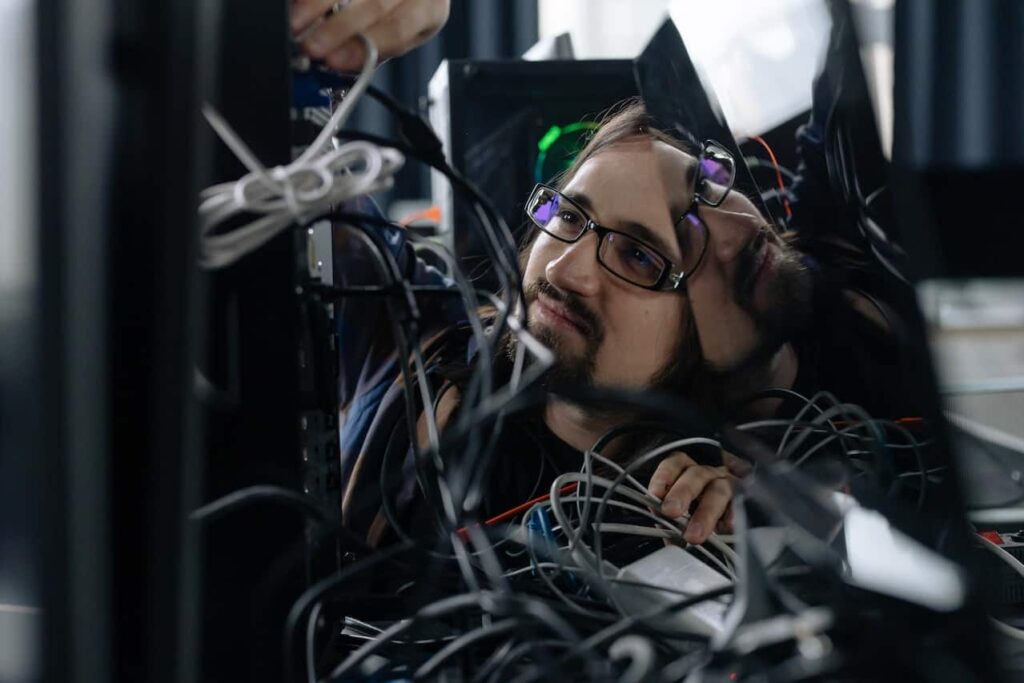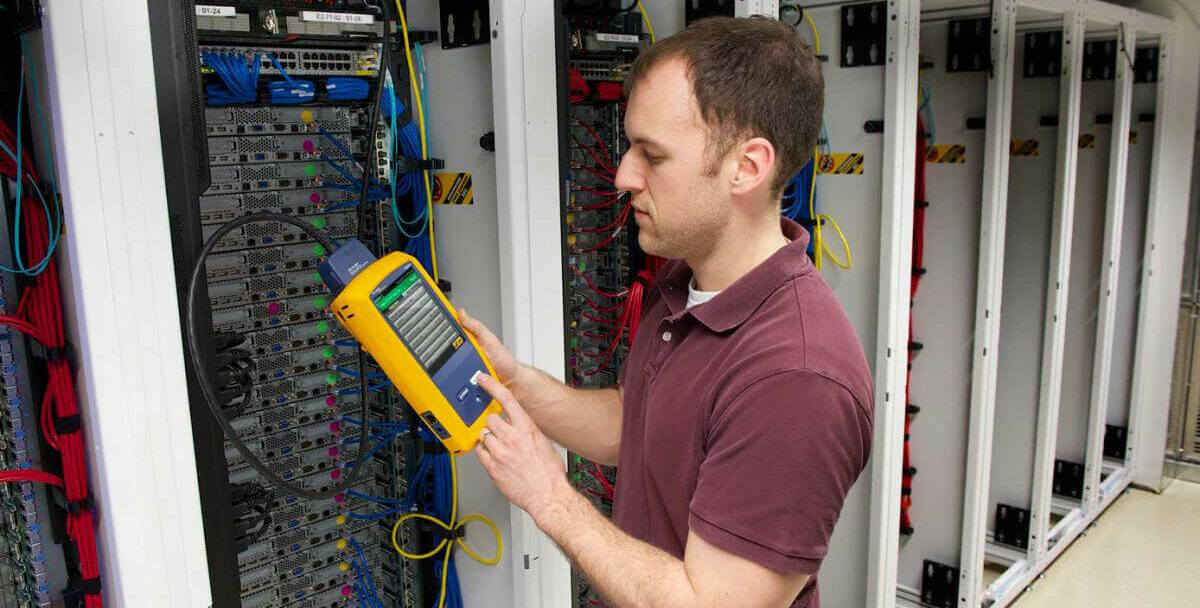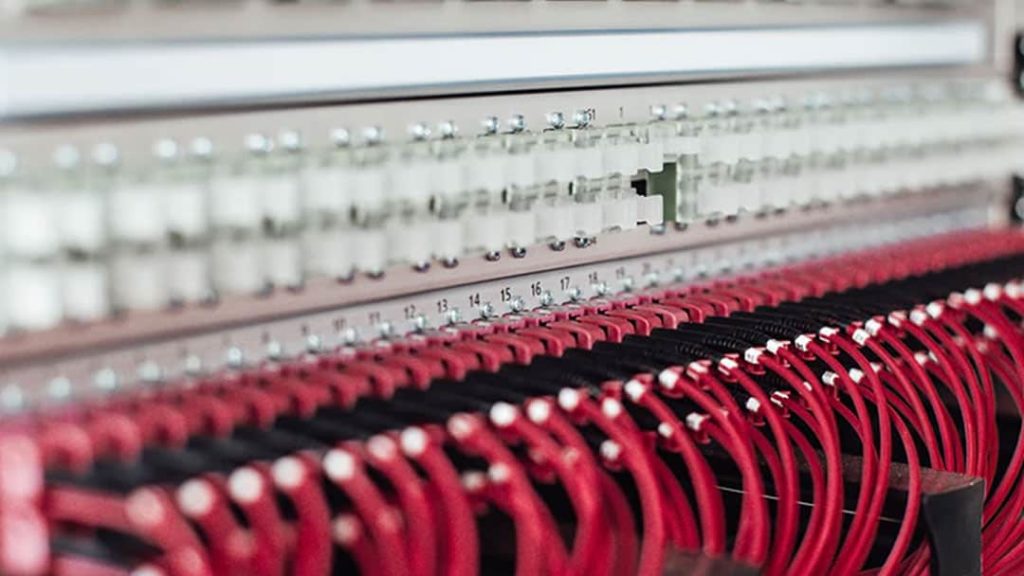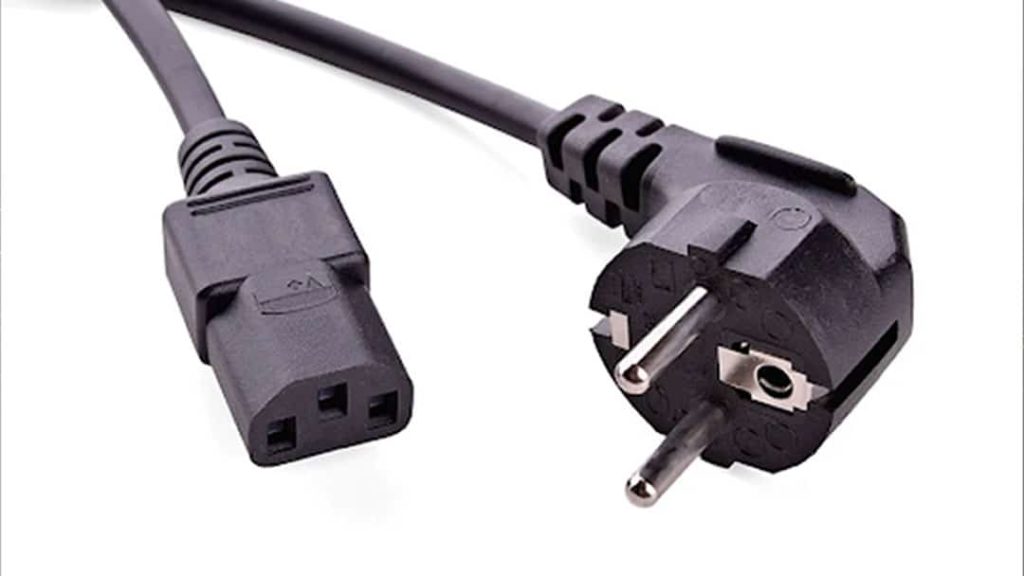When it comes to your data center, everything needs to be just right. This means ensuring that the cabling is tested correctly and troubleshot. In this blog post, we’ll discuss the importance of data center cable testing and troubleshooting, as well as some tips on how to get the job done. Keep reading to learn more!
Types of Data Centers
From a single server room to groups of scattered buildings, data centers come in a variety of sizes. But they all share one thing in common: they serve as important corporate assets where businesses routinely invest in and install cutting-edge data center networking, processing, and storage technologies.
The modern data center has changed from being a facility with an on-site architecture to one that combines on-site systems with cloud infrastructures in which networks, applications, and workloads are virtualized across various private and public clouds.
- Enterprise data centers are primarily built and used by a single corporation for internal purposes. These are frequent among technology behemoths.
- Colocation data centers operate as a type of rental property, making the space and resources of a data center available to anyone who chooses to rent them.
- Service management As a third party, data centers provide services such as data storage, computing, and other services to consumers.
- Cloud data centers: These are dispersed and made accessible to customers occasionally with the help of a different managed service provider.
Interested in learning more about the newest technology trends? Find out more on our blog!
Types of Plant Layouts
Centralized Cable Plant Layout
Centralized Cable Plant Layouts are those that are established in an unstructured fashion, such as pre-existing data centers where technologies were accepted after the initial design, such as support for Single Pair Ethernet or IoT projects. This layout will centralize patch panels and cabling into a single rack or group of racks. Backhaul wiring connecting the DC to the corporate LAN is also frequently found at this position. Servers and storage in racks surrounding patch panels can be linked using relatively short patch cables. However, the patch connections must be longer the further away servers, and other network-connected devices are. Cable management frequently gets disorderly and sloppy as the quantity and lengths of cables necessary to link data center devices increase in such a limited and centralized part of the server room.
End-of-Row Cable Plant Layout
This larger data center plant layout uses distributed cable patch panels and switching/fiber channel switch gear in various locations within the data center facility to reduce some of the cabling congestion of a centralized patch panel design. This layout can also help to improve the efficiency of data center operations by making it easier to connect and disconnect cables. In addition, this layout can help to improve the aesthetics of data centers by hiding cables from view. As a result, the end-of-row cable plant layout is excellent for data centers.
Top-of-Rack Cable Plant Layout
As technology advances, the way that we lay out our cable plants changes. One such example is the top-of-rack cable plant layout. The cabling termination points are distributed even further using this plant blueprint. At the top of each equipment rack in the DC is an Ethernet and/or fiber channel switch. This type of layout is becoming more popular as it offers several benefits. First, it allows for a higher density of cables, which is important as data center equipment becomes more compact. Second, it helps to improve airflow, which can reduce cooling costs. Finally, it enables more manageable maintenance and upgrades, as all of the cables are easily accessible. As a result, the top-of-rack cable plant layout is an increasingly popular choice for data centers of all sizes.
Related Link: Hot Aisle vs. Cold Aisle Containment for Data Centers

Testing & Troubleshooting
Basic Network Troubleshooting
Data center cable plant managers frequently have to navigate row after row of infrastructure equipment to locate the server or network rack where the issue is located when troubleshooting network connectivity or performance issues in the data center. Administrators frequently employ simple troubleshooting methods to identify the origin of an issue when it is believed that the network hardware or linked cabling is to blame. Administrators and field personnel frequently bring a cable test unit with basic network troubleshooting skills, such as ping, traceroute, and discovery, if speed is critical, as it frequently is in the data center. The outcomes of these tests are frequently useful for locating and fixing problems.
Signal-to-Noise Ratio (SNR)
High levels of reliability are required for both the transmission and reception of data. Inside the data center, this is particularly accurate. Testing the signal-to-noise (SNR) ratio along a twisted-pair cable path between the server/device and the network switch is one way to guarantee transmission reliability. SNR assesses a signal’s intensity in the presence of outside signal interference. Noise is a common term used to describe this interference. The transmission dependability will be reduced the closer an SNR reading is to zero. SNR should typically be 3dB or greater to effectively block out most noise interference. It’s crucial to keep in mind that the more data is transferred at a faster rate, the more
Fiber Inspections
Fiber inspection is highly recommended whenever a device is installed or moved, or cabling/connectors/switches are replaced. This also applies to brand-new patch cables.
Contaminated fiber can create high connection loss and reflectance difficulties if not properly inspected and cleaned on both ends of the wire. Both can significantly reduce TX/RX performance. In fact, filthy fiber ends are the most common source of fiber optic performance issues in data centers. As new standards and technology enable greater speeds along an optical cable, the relevance of fiber inspection will only expand. The lower the overall loss budget for the link, the faster data is transmitted.
A fiber inspection scope is often used for magnification because the majority of pollutants cannot be seen with the human eye. Some multifunction testers allow you to attach a fiber inspection scope to the device and view the output of the fiber end that has been enlarged on the tester’s display. Administrators of data centers may now quickly inspect the fiber ends for debris and dust. Before introducing contaminated fiber ends into a production environment, they should first be thoroughly cleaned and retested.
Cable and Installation Mistakes
Whether your data center cabling is managed in-house or by a competent third-party cabling crew, faults do occur. For a variety of reasons, problems with existing cabling may go overlooked for weeks, months, or years. It’s possible, for example, that the cabling was never manufactured until recently. Perhaps upgraded network hardware now necessitates faster transit speeds for the cabling. Another consideration is infrastructure development to accommodate upcoming technologies.
Finally, for the first time, cabling may need to transfer electricity across twisted-pair wiring. Regardless, pinpointing the exact site of the cabling error will result in much faster problem resolution.
Cabling that has been bent, stretched, or kinked beyond the manufacturer’s requirements is not unusual. Some cable test tools frequently have the ability to locate the exact location of a cable defect in addition to determining whether or not there is a performance problem. Knowing this can help reduce the time needed to fix the problem and point out other cables in a bundle that might have been harmed due to improper installation techniques.
Related Link: Environmental Monitoring: Catch Data Center Equipment Failure

Test Equipment
There are a few things to take into consideration while selecting the best test tool for your data center. A broad-based multifunction test solution or specific test tools can be acquired.
The test equipment on which you will rely should be capable of the following:
- PoE Load Testing
- Fiber Inspection
- SNR-based Multi-Gigabit Link
- Speed Testing
- Standards-based Copper and Fiber Certification
- Copper and Fiber Network Compliance Reporting for Tested Link
- Wireless Network Connectivity: Testing including Signal Strength and Connectivity Assurance
Are you considering implementing new workplace technology into your business?
Call us today to see how we can help!
Testing and Troubleshooting Data Center Cable Plans
Modern data centers and the supporting network infrastructure will continue to develop to meet the needs of cutting-edge technologies like Smart Buildings as businesses look for ways to reduce costs, lessen their environmental impact, and converge historically dissimilar operational and IT systems. It is critical to recognize that testing requirements have grown in order to maintain deployment stability and uptime.
Now that you understand some of the ways to test and troubleshoot data center cable plants, be sure to check out our site for more helpful technology blogs. We have a wide range of content that can help you stay up-to-date on the latest tech trends and developments.
Related Link: Immersion Liquid Cooling: What to Know for Data Centers
Last Updated on January 20, 2023 by Josh Mahan




